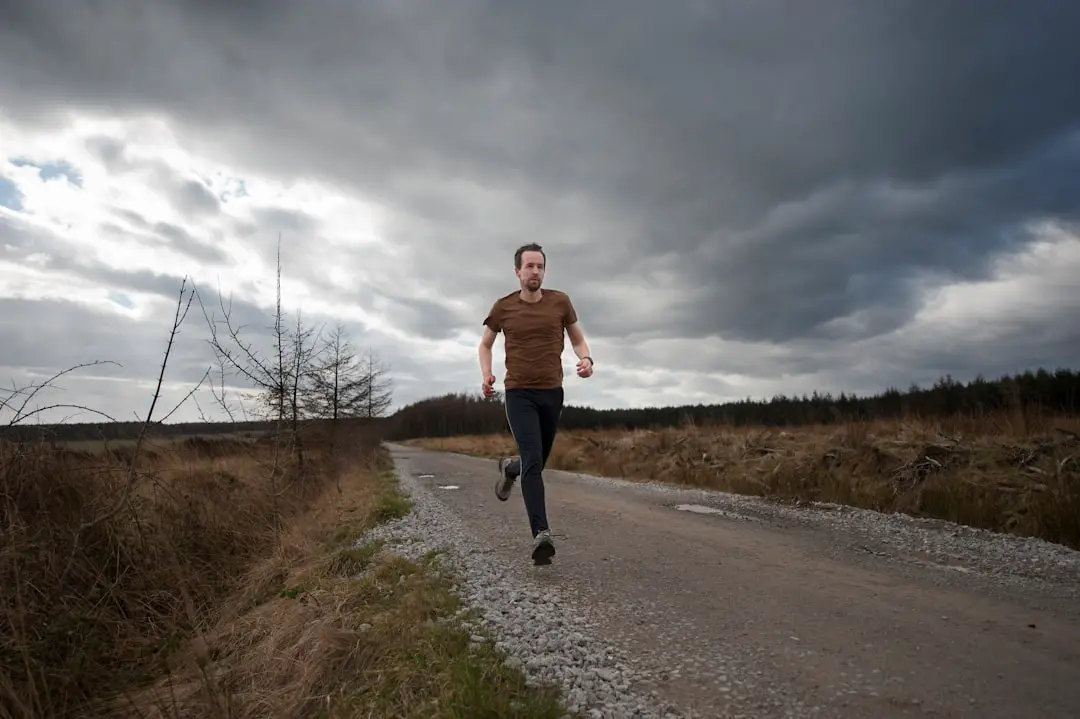Support our educational content for free when you purchase through links on our site. Learn more
How to Create a Running Race: 12 Essential Steps for Success 🏃♀️

Are you ready to turn your passion for running into an unforgettable event? Organizing a running race can be both exhilarating and challenging, but with the right guidance, you can create an experience that participants will cherish. Did you know that over 60% of Americans are interested in participating in running events? This presents a golden opportunity for you to tap into a thriving community and promote health and fitness in your area. In this comprehensive guide, we’ll walk you through 12 essential steps to successfully create your own running race, from selecting a theme to managing race day logistics. Whether you’re a seasoned pro or a first-time organizer, our insights will help you navigate the process with confidence and flair!
Imagine the excitement of seeing hundreds of participants crossing the finish line, cheering for their accomplishments while you bask in the success of your event. Ready to dive in? Let’s lace up those shoes and get started!
Key Takeaways
- Planning is Key: A well-structured plan is essential for a successful race.
- Engage the Community: Involve local businesses and volunteers to enhance the experience.
- Promote Effectively: Utilize social media and local partnerships to attract participants.
- Safety First: Ensure adequate medical support and contingency plans for emergencies.
- Create a Memorable Experience: Focus on participant amenities and post-race festivities.
Ready to gear up for your race? 👉 Shop race supplies on:
Let’s get started on making your running race a reality!
Table of Contents
Quick Tips and Facts
Understanding the Essentials of Organizing a Running Race
Reach Out to Experienced Race Directors for Insights
Choosing the Perfect Theme for Your Race
How to Select an Engaging Race Name
Picking the Ideal Race Date: Timing is Everything
Finding the Best Race Location: Where the Magic Happens
Building Your Dream Team for Race Day Success
Crafting a Comprehensive Race Budget: Dollars and Sense
Developing a Winning 5K Race Plan
Keeping It Simple: The Key to a Successful Event
Promoting Your Race Like a Pro: Get the Word Out!
Preparing for the Unexpected: Race Day Contingencies
Enhancing the Race Experience: Making Memories
Additional Resources for Race Organizers
Frequently Asked Questions About Organizing a Race
Related Podcasts for Race Enthusiasts
Conclusion
Recommended Links
FAQ
Reference Links
Quick Tips and Facts
To create a successful running race, it’s essential to start with a solid foundation. Planning is key, and understanding the basics of organizing a running event can make all the difference. If you’re looking to create your own virtual race, check out our guide on how to create your own virtual race free for valuable insights and tips. Here are some quick tips and facts to get you started:
- A well-structured training plan can help you prepare for the demands of organizing a running event.
- Volunteering at other races can provide valuable experience and help you learn from others.
- Joining online communities, such as the Race Directors HQ Facebook group, can connect you with experienced race directors and provide a wealth of knowledge.
- Setting clear goals and objectives for your event can help you stay focused and ensure its success.
Understanding the Importance of Planning
Planning is crucial when it comes to organizing a running event. It’s essential to consider every aspect of the event, from the route and logistics to marketing and sponsorship. A well-planned event can make all the difference in ensuring a successful and enjoyable experience for participants.
Understanding the Essentials of Organizing a Running Race
Organizing a running race requires a deep understanding of the essentials, including course design, permits, and insurance. It’s essential to research and understand the local regulations and requirements for hosting a running event. According to the USA Track & Field website, course certification is not always required, but it’s highly recommended to ensure a safe and accurate course.
Key Considerations for Race Organization
When organizing a running race, there are several key considerations to keep in mind, including:
- Course measurement: Ensuring the course is accurately measured to provide a fair and challenging experience for participants.
- Permitting: Obtaining the necessary permits and approvals from local authorities to host the event.
- Insurance: Securing adequate insurance coverage to protect against potential risks and liabilities.
Reach Out to Experienced Race Directors for Insights
Reaching out to experienced race directors can provide valuable insights and guidance when organizing a running event. According to Race Directors HQ, joining online communities and forums can connect you with experienced race directors and provide a wealth of knowledge. You can ask questions like:
- How did you promote your race?
- What insurance considerations should I be making?
- Any tips for a first-time race director as far as serving as the event’s emcee?
Choosing the Perfect Theme for Your Race
Choosing the perfect theme for your race can make all the difference in attracting participants and creating a unique experience. Consider themes like fun runs, seasonal runs, or food-based runs. According to Active.com, themed runs can be a great way to attract new participants and create a fun and engaging experience.
Tips for Selecting a Theme
When selecting a theme, consider the following tips:
- Research local competition: Ensure your theme is unique and doesn’t conflict with other local events.
- Consider your target audience: Choose a theme that appeals to your target audience and demographic.
- Keep it simple: Avoid overly complex or confusing themes that may deter participants.
How to Select an Engaging Race Name
Selecting an engaging race name can help attract participants and create a memorable experience. According to Runner’s World, a good race name should be clear, concise, and creative. Consider crowd-sourcing name ideas via social media or using online tools to generate name suggestions.
Tips for Selecting a Race Name
When selecting a race name, consider the following tips:
- Keep it simple: Avoid long or complicated names that may be difficult to remember.
- Make it memorable: Choose a name that is easy to remember and stands out from other events.
- Check for trademark issues: Ensure your race name doesn’t conflict with existing trademarks or brand names.
Picking the Ideal Race Date
Picking the ideal race date can make all the difference in attracting participants and ensuring a successful event. According to Running USA, consider factors like competition, seasonality, and day of the week when selecting a date. Avoid scheduling conflicts with other local events or holidays.
Tips for Selecting a Race Date
When selecting a race date, consider the following tips:
- Research local events: Ensure your date doesn’t conflict with other local events or races.
- Consider the weather: Choose a date that avoids extreme weather conditions or potential weather-related issues.
- Give yourself time: Allow sufficient time for planning and preparation to ensure a successful event.
Finding the Best Race Location
Finding the best race location can provide a safe and enjoyable experience for participants. According to USA Track & Field, consider factors like access, parking, and hygiene facilities when selecting a location. Ensure the location is safe and suitable for the type of event you’re hosting.
Tips for Selecting a Race Location
When selecting a race location, consider the following tips:
- Research local options: Explore local parks, trails, or other potential locations that meet your needs.
- Consider logistics: Ensure the location is easily accessible and has sufficient parking and amenities.
- Evaluate safety: Choose a location that is safe and free from potential hazards or risks.
Building Your Dream Team for Race Day Success
Building a dream team is essential for ensuring a successful and enjoyable experience for participants. According to VolunteerMatch, recruiting volunteers can help with tasks like registration, course marshaling, and aid stations. Consider delegating responsibilities to team members to ensure a smooth and efficient event.
Tips for Building a Dream Team
When building a dream team, consider the following tips:
- Recruit volunteers: Reach out to local running clubs, community groups, or online volunteer platforms to find willing volunteers.
- Delegate responsibilities: Assign tasks and responsibilities to team members to ensure a smooth and efficient event.
- Provide training: Offer training and support to team members to ensure they’re prepared for their roles.
Crafting a Comprehensive Race Budget
Crafting a comprehensive race budget is essential for ensuring a successful and financially sustainable event. According to Budget Builder, consider factors like revenue, expenses, and profit margins when creating a budget. Ensure you have a clear understanding of your costs and revenues to make informed decisions.
Tips for Crafting a Comprehensive Budget
When crafting a comprehensive budget, consider the following tips:
- Track revenues and costs: Ensure you have a clear understanding of your revenue streams and expenses.
- Set realistic goals: Establish realistic revenue and expense targets to ensure a financially sustainable event.
- Review and revise: Regularly review and revise your budget to ensure you’re on track to meet your financial goals.
Developing a Winning 5K Race Plan
Developing a winning 5K race plan requires careful consideration of factors like course design, logistics, and marketing. According to 5K training plans, a well-structured plan can help you prepare for the demands of organizing a running event. Ensure you have a clear understanding of your goals and objectives to create a successful plan.
Tips for Developing a Winning Plan
When developing a winning plan, consider the following tips:
- Set clear goals: Establish clear and achievable goals for your event to ensure focus and direction.
- Research and plan: Research local events, courses, and logistics to create a well-informed plan.
- Review and revise: Regularly review and revise your plan to ensure you’re on track to meet your goals.
Keeping It Simple
Keeping it simple is essential for ensuring a successful and enjoyable experience for participants. According to Keep it Simple, avoid overly complex or confusing elements that may deter participants. Focus on creating a safe, enjoyable, and well-organized event.
Tips for Keeping It Simple
When keeping it simple, consider the following tips:
- Avoid complexity: Simplify your event by avoiding overly complex or confusing elements.
- Focus on the essentials: Prioritize the essential elements of your event, such as safety, logistics, and participant experience.
- Review and revise: Regularly review and revise your event plan to ensure you’re on track to meet your goals.
Promoting Your Race Like a Pro
Promoting your race like a pro requires careful consideration of factors like marketing, social media, and sponsorship. According to Promote Your Race, a well-structured promotion plan can help you attract participants and create a successful event. Ensure you have a clear understanding of your target audience and marketing channels to create an effective promotion plan.
Tips for Promoting Your Race
When promoting your race, consider the following tips:
- Know your audience: Understand your target audience and tailor your marketing efforts to appeal to them.
- Use social media: Leverage social media platforms to promote your event and engage with potential participants.
- Secure sponsorship: Seek out sponsors who align with your event’s values and goals to help support your event.
Preparing for the Unexpected
Preparing for the unexpected is essential for ensuring a successful and safe experience for participants. According to Prepare for the Unexpected, consider factors like weather, injuries, and emergencies when creating a contingency plan. Ensure you have a clear understanding of potential risks and have a plan in place to mitigate them.
Tips for Preparing for the Unexpected
When preparing for the unexpected, consider the following tips:
- Identify potential risks: Recognize potential risks and hazards associated with your event.
- Create a contingency plan: Develop a plan to mitigate potential risks and ensure a safe and successful event.
- Review and revise: Regularly review and revise your contingency plan to ensure you’re prepared for any unexpected events.
Enhancing the Race Experience
Enhancing the race experience is essential for creating a memorable and enjoyable experience for participants. According to Enhance the Experience, consider factors like participant amenities, course entertainment, and post-race festivities when creating a plan to enhance the experience. Ensure you have a clear understanding of your participants’ needs and preferences to create a tailored experience.
Tips for Enhancing the Experience
When enhancing the experience, consider the following tips:
- Know your participants: Understand your participants’ needs and preferences to create a tailored experience.
- Add amenities: Provide amenities like water, food, and restrooms to ensure a comfortable experience.
- Create a festive atmosphere: Use music, decorations, and entertainment to create a fun and festive atmosphere.
Additional Resources for Race Organizers
Additional resources for race organizers can provide valuable insights and guidance when planning and executing a running event. According to Race Organizers, consider resources like online forums, training plans, and event management software to help you plan and execute a successful event.
Tips for Utilizing Additional Resources
When utilizing additional resources, consider the following tips:
- Research and review: Research and review available resources to ensure they meet your needs and goals.
- Seek out expert advice: Seek out expert advice and guidance from experienced race organizers and industry professionals.
- Stay up-to-date: Stay up-to-date with the latest trends, best practices, and technologies to ensure a successful and modern event.
Frequently Asked Questions About Organizing a Race
Frequently asked questions about organizing a race can provide valuable insights and guidance when planning and executing a running event. According to FAQs, consider questions like what is the cost of organizing a race, how do I promote my race, and what are the essential elements of a successful race to ensure a successful and enjoyable experience for participants.
Tips for Addressing FAQs
When addressing FAQs, consider the following tips:
- Research and review: Research and review available FAQs to ensure you have a clear understanding of common questions and concerns.
- Provide clear answers: Provide clear and concise answers to FAQs to ensure participants have a clear understanding of your event.
- Stay up-to-date: Stay up-to-date with the latest FAQs and concerns to ensure a successful and modern event.
Related Podcasts for Race Enthusiasts
Related podcasts for race enthusiasts can provide valuable insights and guidance when planning and executing a running event. According to Podcasts, consider podcasts like The Runner’s World Podcast, The Running Podcast, and The Endurance Podcast to stay up-to-date with the latest trends, best practices, and technologies in the running industry.
Tips for Utilizing Related Podcasts
When utilizing related podcasts, consider the following tips:
- Research and review: Research and review available podcasts to ensure they meet your needs and goals.
- Subscribe and listen: Subscribe to and listen to podcasts regularly to stay up-to-date with the latest trends and best practices.
- Take notes and apply: Take notes and apply the insights and guidance from podcasts to your event planning and execution.
Conclusion

Organizing a running race can be an exhilarating yet challenging endeavor. By following the steps outlined in this guide, you can create a memorable event that not only attracts participants but also fosters community spirit and promotes health and fitness. Remember, the key to a successful race lies in thorough planning, effective promotion, and providing an enjoyable experience for all involved.
To recap, here are the positives of organizing a running race:
- Community Engagement: It brings people together for a common cause, whether it’s fitness, charity, or fun.
- Health Promotion: Encourages participants to stay active and healthy.
- Fundraising Opportunities: Can serve as a platform to raise funds for local charities or causes.
However, there are also negatives to consider:
- Logistical Challenges: Managing permits, safety, and volunteers can be overwhelming.
- Financial Risks: Without proper budgeting, you may face financial losses.
- Time-Consuming: Planning a race requires significant time and effort.
With these considerations in mind, we confidently recommend that you dive into the exciting world of race organization! Whether you’re planning a local 5K or a larger marathon, the experience can be incredibly rewarding. So, lace up those shoes and get started on your race planning journey! 🏃♂️🎉
Recommended Links
- 👉 Shop Race Supplies on:
- Books on Race Planning:
FAQ

What are the steps to organize a successful running race?
Understanding the Process
- Define Your Goals: What do you want to achieve? Fundraising, community engagement, or fitness promotion?
- Choose a Date and Location: Ensure it doesn’t conflict with other local events.
- Create a Budget: Outline expected costs and potential revenues.
- Obtain Permits: Contact local authorities for necessary permits.
- Plan the Course: Map out a safe and enjoyable route.
- Recruit Volunteers: Assemble a team to help on race day.
- Promote Your Event: Use social media, local media, and flyers to attract participants.
- Execute on Race Day: Ensure everything runs smoothly, from registration to post-race festivities.
How do I choose a safe and scenic route for my running event?
Route Selection Tips
- Research Local Trails: Look for parks or scenic areas that are popular with runners.
- Consider Safety: Ensure the route is free from heavy traffic and hazards.
- Test the Route: Run the course yourself to evaluate its suitability.
- Include Landmarks: Scenic views or local landmarks can enhance the experience.
Read more about “Create Your Own Virtual Race Free: 15 Steps to an Unforgettable Experience! 🏃♀️”
What are the essential items to include in a runner’s race packet?
Race Packet Essentials
- Bib Number: Clearly marked for identification.
- Safety Pins: For attaching the bib to clothing.
- Event T-Shirt: A souvenir for participants.
- Course Map: Information on the route and aid stations.
- Sponsor Information: Flyers or coupons from sponsors.
How can I effectively promote my running race to attract more participants?
Promotion Strategies
- Social Media Campaigns: Use platforms like Facebook and Instagram to reach potential participants.
- Email Newsletters: Send updates and reminders to your mailing list.
- Local Partnerships: Collaborate with local businesses for cross-promotion.
- Online Race Calendars: List your race on popular race calendars to increase visibility.
Read more about “How to Organize a Virtual Walkathon: 10 Essential Steps for Success! 🚶♂️💻”
What are the key considerations for planning a virtual running race or walkathon?
Virtual Race Planning
- Choose a Platform: Select a reliable platform for registrations and results.
- Set Clear Guidelines: Provide participants with instructions on how to complete the race.
- Engage Participants: Use social media to create a community feel.
- Offer Incentives: Consider virtual medals or prizes to encourage participation.
Read more about “How to Organize a Walkathon: 12 Essential Steps for Success … 🚶♂️✨”
How do I manage race day logistics, including timing, volunteers, and crowd control?
Logistics Management
- Timing Systems: Use chip timing for accurate results.
- Volunteer Coordination: Assign clear roles and provide training.
- Crowd Control Measures: Use barriers and signage to guide participants.
- Emergency Plans: Have a first aid team and emergency procedures in place.
What are the different types of running races, such as 5K, 10K, and marathon, and how do I choose the right one for my event?
Race Types Overview
- 5K: Great for beginners and families; ideal for fundraising.
- 10K: A step up for more experienced runners; offers a challenge.
- Half Marathon/Marathon: Attracts serious runners; requires more planning and training.
- Fun Runs: Non-competitive and themed races; focus on enjoyment.
How can I use social media and online registration platforms to streamline my running race planning process?
Utilizing Technology
- Online Registration: Use platforms like Eventbrite or RunSignUp for easy sign-ups.
- Social Media Engagement: Create event pages and share updates to keep participants informed.
- Live Updates: Use social media on race day for real-time updates and engagement.
What are the benefits of hosting a virtual walkathon or running race, and how can I encourage participation from a wider audience?
Virtual Race Benefits
- Wider Reach: Participants from anywhere can join.
- Flexibility: Participants can complete the race at their convenience.
- Lower Costs: Reduced overhead for organizers.
- Encouragement Strategies: Use social media challenges and virtual leaderboards to motivate participants.
How do I ensure participant safety and provide adequate first aid and medical support during my running event?
Safety Measures
- First Aid Stations: Set up stations along the course with trained personnel.
- Emergency Plans: Have clear protocols for emergencies.
- Communication: Ensure all volunteers and staff are informed about safety procedures.
- Participant Briefing: Provide safety information during registration and pre-race meetings.
Reference Links
By following these guidelines and utilizing the resources provided, you’ll be well on your way to organizing a successful running race that participants will remember for years to come! 🏅🎉
